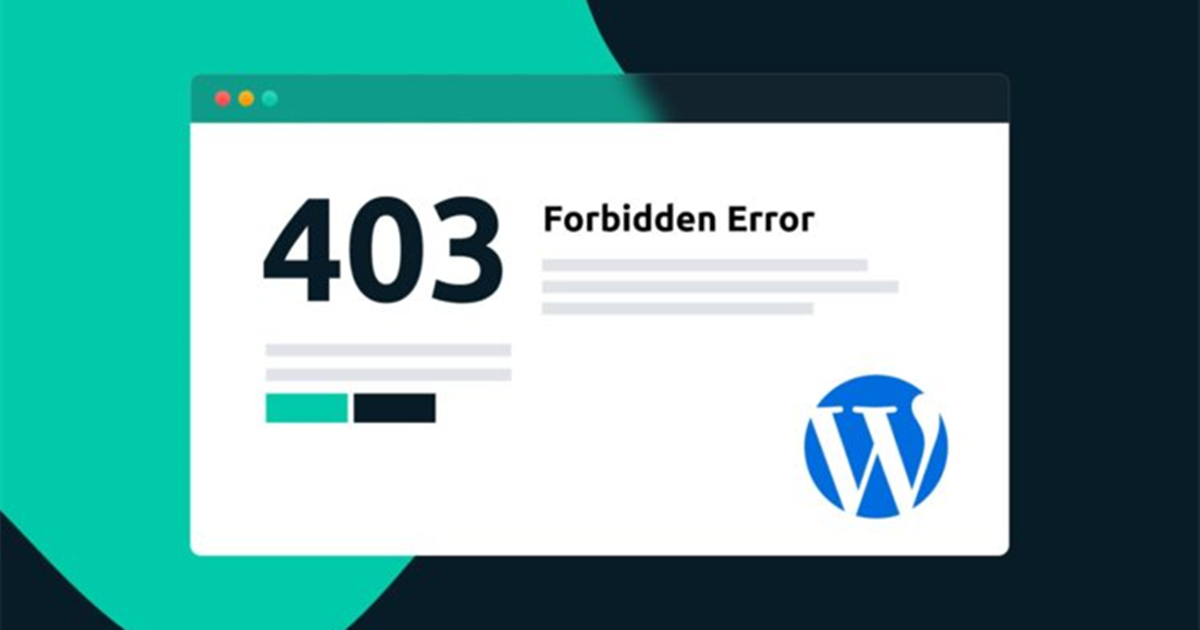In some cases, it can appear as though there are no scarcity of WordPress mistakes to get rid of, although the platform is protected and steady. Though, while this indicates the integrated mistake reporting is doing its task, you still require to repair problems that occur. The 403 Forbidden WordPress mistake is a typical problem, with an uncomplicated option.
Usually, the issue connects to consents. Though, in many cases, you ran encountered defective plugins, corrupt files, and a couple of other triggers. With a couple of fast tweaks to your core files, you’ll have the ability to return up and running in a flash.
For this post, we’re going to take a look at the 403 Forbidden WordPress mistake, and reveal you a couple of techniques to determine the cause and repair the issue. Initially, let’s discuss more about the mistake itself.
What the 403 Forbidden WordPress Error Is
To begin with, the 403 Forbidden WordPress mistake is among the many ‘HTTP status codes’. You’ll understand this a minimum of through a 404 mistake, however there are lots more– nearly 600, in fact. There are blocks of numbers that associate with comparable concerns, such as success messages, reroutes, and more.
The 400 variety of numbers associates with ‘customer mistakes’. To put it simply, this indicates the customer (in this case the internet browser) requests information from the server, however it will not offer it over. For the most part, the server comprehends what the demand is, however will not license it.
Great deals of times, you’ll see a direct factor for the mistake within its ‘payload info’. To put it simply, the text you’ll see on the 403 Forbidden page itself.
To boil it down even more, the server understands the internet browser, and comprehends what it desires, however the web browser does not have the ideal approvals. How the server shows this depends upon the internet browser your usage.
How the 403 Forbidden WordPress Error Could Look In Your Browser
Prior to we repair the 403 Forbidden WordPress mistake, it’s worth keeping in mind that it might look various depending upon the server the website utilizes, and your web browser. For instance, there could be some info on the server and mistake, yet absolutely nothing else …
In a nutshell, if you see a reference of approvals or a specific “prohibited” message, you’re typically handling the 403 Forbidden WordPress mistake.
How to Fix the 403 Forbidden WordPress Error Using 4 Methods
Make Sure Your File Permissions Are Correct
First of all, the 403 Forbidden WordPress mistake is typically a permissions-based concern. As such, this is the top place to begin.
The initial step is log into your server through SFTP, and get to your root folder. You might likewise see public_html, www, the name of your website, or something comparable
Though, you will need to single out your wp-config. php file, as this frequently utilizes a various set of authorizations– 440 or 400. You’ll see from the checkboxes, this locks down the file to read-only opportunities
Check that Your Plugins Aren’t Causing the Error
A classic way of fixing a WordPress error is to deactivate all of your plugins, then reactivate them. This can rule out a rogue line of code inside one of those plugins as a cause for the error.
Fix a Corrupt .htaccess File
There’s one more aspect you can look at within your server in order to fix the 403 Forbidden WordPress error – your .htaccess file. This is a configuration file for your server. Though, there are some caveats here:
If your server runs on Nginx, you won’t have a .htaccess file. As such, you won’t be able to carry out these steps. If you’re unsure of the server your site runs on, you may want to check your hosting control panel
To fix it, first download the file as a backup. Next, delete the file from the server. From here, head into your WordPress dashboard to the Settings > Permalinks page:
The final step here is simple: Click the Save Changes button to generate a new .htaccess file:
Once you’ve done this and determined that the file is fine, you can re-add the content from your backup file.
Investigate Problems With Your Content Delivery Network (CDN)
Before we wrap up, it could be that the 403 Forbidden WordPress error affects your assets (such as media, CSS, and JavaScript) and nothing else. If this is the case, there are two avenues to try:
First, disable your CDN if you use one. How you do this will be individual to your own provider and service. Though, you can often disable it at the flick of a switch.
Your host or CDN may set up ‘hotlinking protection’. This stops sites from linking direct to your images while displaying them on your site. In most cases, you’ll see a 403 Forbidden WordPress error, and this is normal behavior. Though, you may want to turn this off to check for the error.

